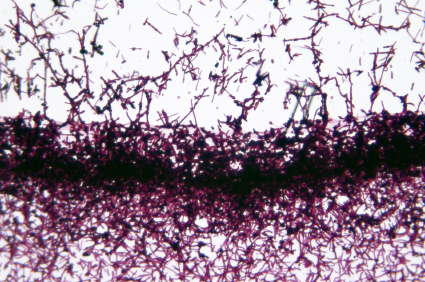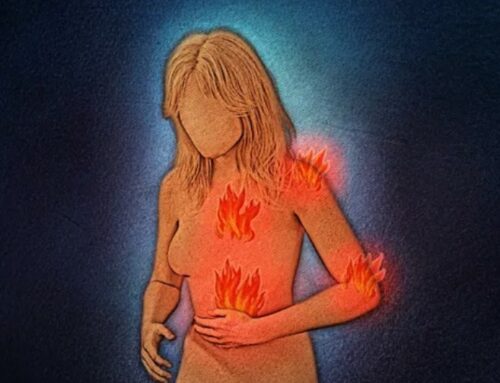Yeast infections (candidiasis) are caused by an overgrowth of candida fungi. Dr. Tina Marcantel is a naturopathic doctor in Gilbert who also serves the East Valley cities of Mesa, Tempe, Chandler, Queen Creek, Apache Junction, Scottsdale, and the greater Phoenix area.
Many people are familiar with common symptoms of yeast infection, but did you know that signs and symptoms of infections caused by candida overgrowth can sometimes overlap or mimic other complaints such as chronic fatigue syndrome (CFS) or fibromyalgia? For that reason, it is important to rule out candidiasis when seeking a diagnosis.
Some of the more obvious signs of yeast infection in adults are jock itch, urinary tract infection (UTI), recurrent vaginal yeast infections (accompanied by thick white discharge with vaginal itching), fungal infection of toenails and fingernails (onychomycosis), and a white coating on the tongue.
Other symptoms of a yeast overgrowth may include unusual cravings for sugar and refined foods, abdominal bloating, rectal itching, brain fog, constipation or diarrhea, headaches, joint pain, fatigue, or itchy ears. Recurrent sinus infections can also be caused by yeast overgrowth instead of bacteria.
Candidiasis can also cause low immunity. Because toxins are released in the blood by yeast it can lower the immune response and increase the chance of getting colds, flu, and other bacterial or viral infections.
Causes
Yeast infection (or candidiasis) is a condition caused by a group of microscopic fungi or yeast. Candida albicans is the most common of the more than twenty species of candida fungi that live on all surfaces of our bodies. Under certain conditions, they can become so numerous they cause infections, particularly in warm and moist areas like the mouth and groin. These infections can usually be cleared up fairly quickly with treatment, but if left untreated they can become serious health risks.
One of the most common causes of candidiasis is a recurrent use of antibiotics. While antibiotics can be helpful in the treatment of bacterial infections, they kill both harmful bacteria and the bacteria that are good for our bodies. The friendly bacteria in our colon help keep the candida fungi in check and when antibiotics have killed them the candida are allowed to proliferate.
The presence of elevated levels of estrogen in the system can also contribute to yeast growth. For that reason, women are more likely than men to suffer from yeast infections. The use of birth control pills or hormone replacement therapy can sometimes contribute to high levels of estrogen in the body that feed a yeast infection. Women also tend to use more antibiotics because of a higher propensity for bladder and urinary tract infections.
Diagnosis and Treatment
Be sure to present your healthcare provider with a thorough history of symptoms. You should also include in your history the type of diet you typically eat and a detailed list of antibiotics you have taken. Steroid use can stimulate yeast overgrowth, as well, so you should be sure to include that in your report.
The first step in treatment is to kill the overgrowth of yeast. In my practice I use a dietary supplement that contains a combination of herbs and other ingredients that help to kill and reduce candida. If a patient’s medical history reveals a sustained use of antibiotics and/or steroids and if the symptoms warrant it, it may be necessary to use a prescription-strength antifungal such as nystatin or Diflucan (fluconazole).
If nail fungus is present I recommend using a mixture of ½ white vinegar to ½ water to soak the affected area 1 to 2 times daily until clear. I also have the patient apply tea tree oil to the affected nails. Remember that the longer the fungus has been present and the more extensive it is, the longer it will take to eradicate it.
The next step in treatment is to starve the yeast by eating a yeast-free diet. You should avoid refined grains, starchy foods, all different sugars, and products containing vinegar, dairy, alcohol, and mushrooms (they are a type of fungus!). The length of time on the diet depends on the extent of the yeast overgrowth.
Finally, it’s important to reestablish good flora/bacteria in the colon by taking some good quality probiotics. Without these good bacteria you can’t keep the candida in proper balance in your system.
We need to note here that as the overgrowth of yeast dies off the patient may feel worse before he or she feels better. This is a natural response as large amounts of yeast die off in a short time and the body goes through a period of detoxification. Each person’s reaction is different, but exacerbation of your present symptoms may happen along with increased gas, bloating, and passage of mucus with your stool. Hang in there! Your body is simply preparing itself to get better by getting rid of the toxins.
For a case history and more information on this subject, read the article “Signs and Symptoms of Fibromyalgia, Arthritis, and Chronic Fatigue Syndrome? The cure may be more basic than you think.”
Go to Health Articles index page
Ready to make an appointment with Dr. Marcantel? Go to our Contact Us page.






